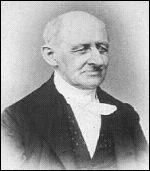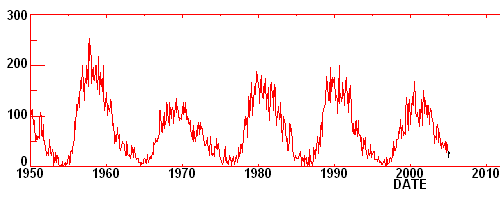
|
||||||||||||||||||||||||
UW prof says cyclic ozone hole proves cosmic ray theoryWATERLOO, Ont. (Monday, March 23, 2009) -- A University of Waterloo scientist says that an observed cyclic hole in the ozone layer provides proof of a new ozone depletion theory involving cosmic rays, a theory outlined in his new study, just published in Physical Review Letters. Qing-Bin Lu, a professor of physics and astronomy and an ozone depletion expert, said it was generally accepted for more than two decades that the Earth's ozone layer is depleted by chlorine atoms produced by the sun's ultraviolet light-induced destruction of chlorofluorocarbons (CFCs) in the atmosphere. But mounting evidence supports a new theory that says cosmic rays, rather than the sun's UV light, play the dominant role in breaking down ozone-depleting molecules and then ozone. Cosmic rays are energy particles originating in space. Ozone is a gas mostly concentrated in the ozone layer, a region located in the stratosphere several miles above the Earth's surface. It absorbs almost all of the sun's high-frequency ultraviolet light, which is potentially damaging to life and causes such diseases as skin cancer and cataracts. The Antarctic ozone hole is larger than the size of North America. In his study, Lu analyzes reliable cosmic ray and ozone data in the period of 1980-2007, which cover two full 11-year solar cycles. The data unambiguously show the time correlations between cosmic ray intensity and global ozone depletion, as well as between cosmic ray intensity and the ozone hole over the South Pole. The Schwabe solar cycle or Schwabe-Wolf cycle is the eleven-year cycle of solar activity of the sun.
It was named after Samuel Heinrich Schwabe (October 25, 1789 April 11, 1875) a German astronomer remembered for his work on sunspots. At periods of highest activity, known as solar maximum or solar max, sunspots appear. Periods of lowest activity are known as solar minimum. The last solar maximum was in 2001. The solar cycle is not strictly 11 years; it has been as short as 9 years and as long as 14 years in recent years.
"This finding not only provides a fingerprint for the dominant role of the cosmic-ray mechanism in causing the ozone hole, but also contradicts the widely-accepted photochemical theory," Lu said. "These observations cannot be explained by that photochemical model. Instead, they force one to conclude that the cosmic ray mechanism plays the dominant role in causing the hole." In the first submission of his paper to Physical Review Letters in August 2008 (prior to the start of the ozone hole season), Lu predicted one of the severest ozone losses in 2008-2009 as a result of the cosmic ray cycle. His study quantitatively predicted that the mean total ozone in the October hole over Antarctica would be depleted to around 187 Dobson units (DU). The latest NASA OMI satellite data sets, released on March 13, show that the mean total ozone in the ozone hole in October 2008 was 197 DU, within five per cent of Lu's prediction. "The total ozone values in the ozone hole in November and December nearly reached the minimum values in the months on record," Lu said. "The 2008 ozone hole shrank quite slowly and persisted until the end of December, making it one of the longest lasting ozone holes on record." He added that in earlier studies he and former colleagues found a strong spatial correlation between cosmic ray intensity and ozone depletion, based on the data from several sources, including NASA satellites. "Lab measurements demonstrated a mechanism by which cosmic rays can cause drastic reactions of ozone-depleting halogens inside polar clouds." Cosmic rays are concentrated over the North and South Poles due to Earth's magnetic field, and have the highest electron-production rate at the height of 15 to 18 km above the ground -- where the ozone layer has been most depleted. Lu says that years ago atmospheric scientists expressed doubts about the cosmic ray mechanism, but now observed data shows which theory is the correct one. For instance, the most recent scientific assessments of ozone depletion by the World Meteorological Organization and the United Nations Environment Program -- using photochemical models -- predicted that global ozone will recover (or increase) by one to 2.5 per cent between 2000 and 2020 and that the Antarctic springtime ozone hole will shrink by five to 10 per cent between 2000 and 2020. In sharp contrast, the cosmic ray theory predicted one of the severest ozone losses over the South Pole in 2008-2009 and another large hole around 2019-2020. "It is interesting to examine these predictions," Lu writes in his article for Physical Review Letters. His piece, entitled Correlation between Cosmic Rays and Ozone Depletion, was published online in the March 20 issue of Physical Review Letters, a journal of the American Physical Society. It can be viewed at link . Lu's research is funded by the Canadian Institutes of Health Research (CIHR) and Natural Science and Engineering Research Council of Canada (NSERC). University of Waterloo 200 University Avenue West Waterloo, Ontario, Canada N2L 3G1 |




